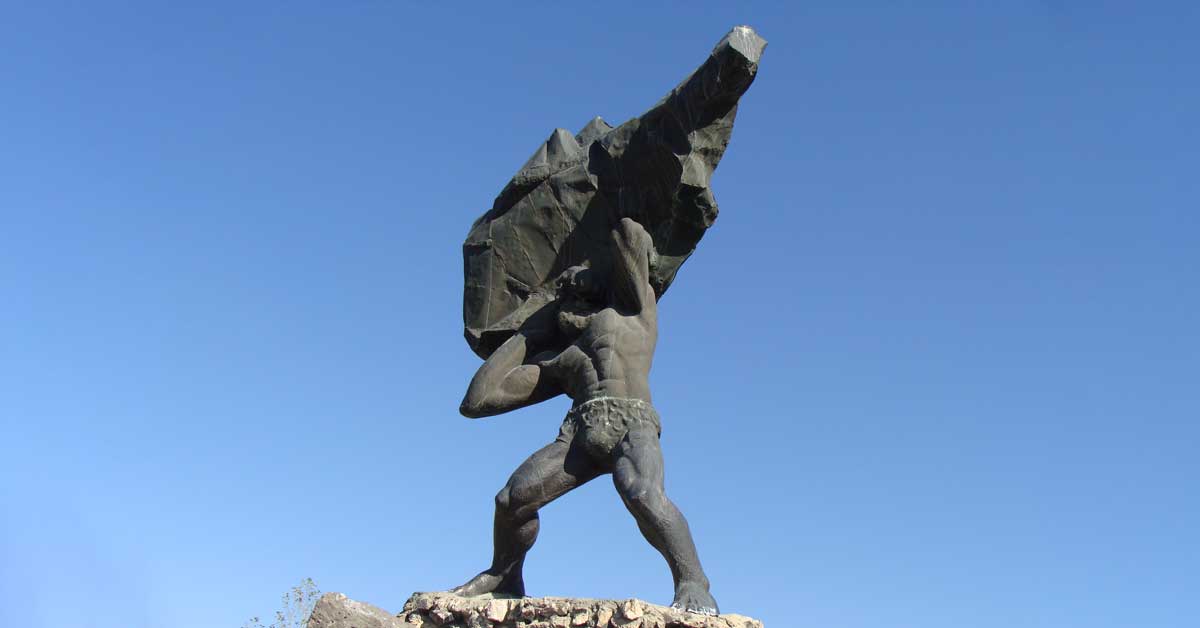2025
2025
2025-10-28

The attempts in Azerbaijan to “Azerbaijanize” or “Turkify” historical and mythological figures have now reached Tork Angegh. According to Dr. Ilhami Jafarsoy, head of the Department of Ancient Languages and Cultures at the Nasimi Institute of Linguistics of the National Academy of Sciences of Azerbaijan (named after Nasimi, a medieval poet appropriated by Azerbaijanis), Tork is simply the same as “Turk,” and Armenians have falsified this for about 250 years. As “proof” of the Tork–Turk connection, Jafarsoy claims that Tork carved eagles into rocks with his nails, and that the eagle is “a Turkic word and symbol.” As the saying goes—genius lies in simplicity.
According to Hrachya Acharian’s Etymological Dictionary, artsiv (“eagle”) is a native Armenian word, derived from the roots ari and tsiw.
The eagle is depicted on the crowns and coins of the Artaxiad kings. Medieval sources note that the kings of the Arsacid dynasty also “wore the symbol of the eagle.”
Returning to Tork—he is one of the most famous figures in Armenian mythology. The historian Movses Khorenatsi attests that Tork was a hero of incredible strength, a great-grandson of Hayk, the forefather of the Armenian people: rough in appearance, tall and sturdy, flat-nosed, deep-eyed and grim in look, the son of Paskam, grandson of Hayk, called Tork by name, who, because of his great fierceness, was nicknamed Angegh; a man of giant stature and strength, whom he made governor of the western lands...”
It is no secret that the invention of the “ancient and early history of Azerbaijan,” along with the efforts to indigenize and localize Azerbaijanis, began as early as the early Soviet period. One of the key components of creating this history has been the declaration of various historical political and cultural figures from different eras as “Azerbaijanis.” There are numerous examples of this practice.
In general, “Azerbaijanization” occurs in two main ways: if a historical figure was Turkic-speaking or Muslim, they are immediately presented as Azerbaijani; if the person was Christian, they are first labeled as “Caucasian Albanian,” and then appropriated.
There are also cases where this process of “Azerbaijanization” has been carried out through the manipulation and reinterpretation of historical sources and facts. Regardless, in Azerbaijan, the appropriation of the cultural heritage of neighboring peoples has been a consistent state policy for nearly a century.
And again about Jafarsoy…
According to this “scholar,” the ancestors of the Germans came to present-day Germany from the territory of modern Turkey, and Old German is close to Turkic languages. Jafarsoy claims that Armenians, fully aware of these facts, have deliberately concealed the “truth,” while Azerbaijanis have remained unaware because, during the Tsarist and Soviet periods, intelligent people were executed or exiled to Siberia.
As for Nasimi — the namesake of the Linguistics Institute where this “brilliant” scholar works…
According to the Encyclopaedia Britannica, “Nasimi was a mystical poet of the late 14th and early 15th centuries who wrote in Turkish, Persian, and Arabic.” There are several versions regarding Nasimi’s birthplace, but it is well established that he never lived in the territory of present-day Azerbaijan. The poet died in 1418 in the city of Aleppo, Syria, where his tomb is located to this day.
Azerbaijan has good relations with the new leadership in Syria, which came to power with Turkey’s support. Taking advantage of this and of the ongoing instability and uncertainty in Syria, the Azerbaijani leadership has reportedly begun seriously considering the possibility of transferring Nasimi’s grave to Azerbaijan. According to the Azerbaijani press, there have already been contacts between Azerbaijan and Syria on this issue.
It should be noted that such a policy does not merely aim to construct a history of Azerbaijan’s “ancient past” or to indigenize Azerbaijanis. It has long become one of the key components of Baku’s expansionist agenda toward its neighbors.